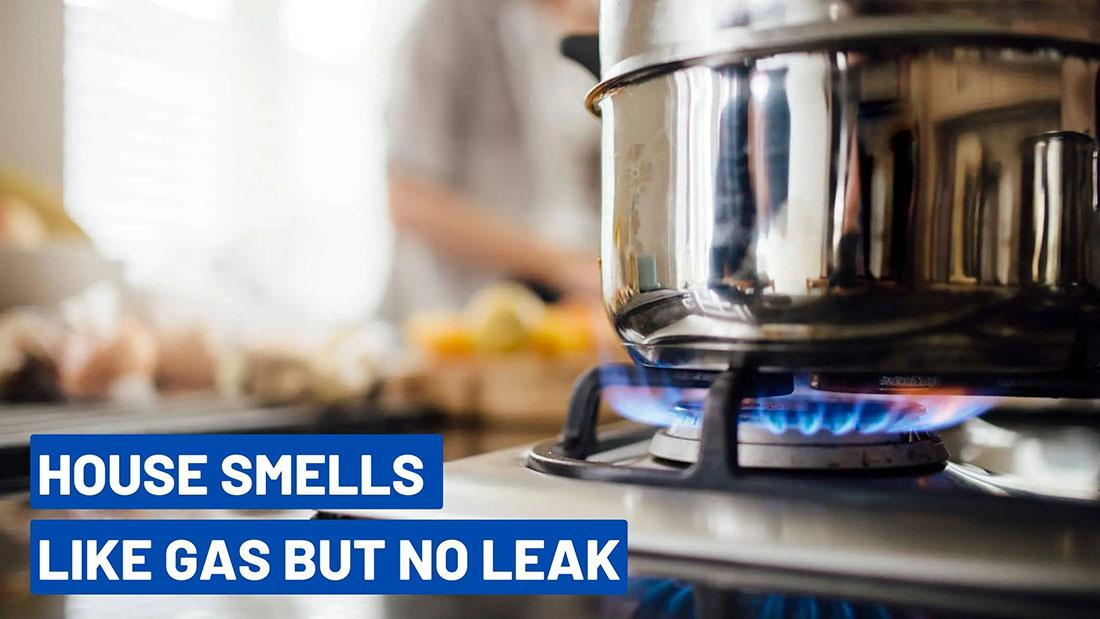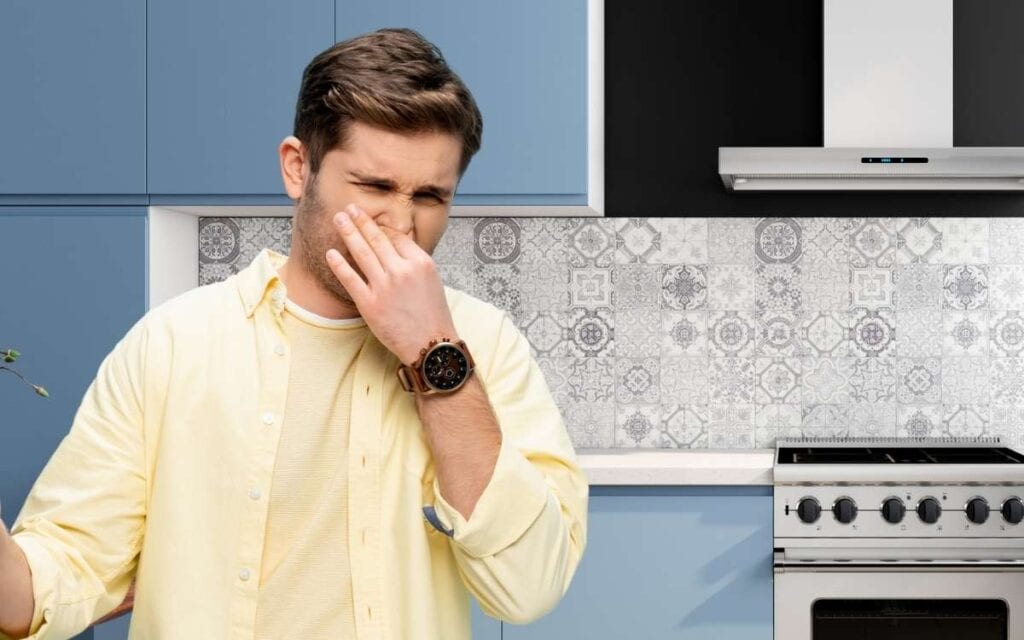What To Do If Your House Smells Like Gas

The smell of gas in your home is a serious issue that demands immediate attention. While often alarming, staying calm and following a systematic approach can help you identify the source and take appropriate action. This guide will walk you through safe troubleshooting steps to address the problem. Remember, your safety is paramount. If at any point you feel uncomfortable or unsure, immediately evacuate the house and call your gas company or emergency services.
Understanding the Potential Culprit: A Faulty Gas Appliance (Water Heater Example)
One common source of gas leaks is a malfunctioning gas-powered appliance, such as a water heater. Over time, the gas valve, thermocouple, burner assembly, or even the flue can degrade, leading to gas leaks. For instance, a partially failing thermocouple might intermittently shut off the gas, leaving a small, noticeable odor. Let's use a water heater failure as our example, to guide us through general gas safety procedures.
Step-by-Step Troubleshooting Guide: When You Smell Gas
Safety First! Before starting any troubleshooting, remember these crucial steps:
- Do Not use any electrical switches or appliances. This includes lights, phones (even landlines), garage door openers, or anything that could create a spark.
- Do Not light a match or use any open flame.
- Open all windows and doors to ventilate the house.
- Evacuate everyone (including pets) from the house. Wait outside a safe distance away from the building.
Step 1: Confirming the Gas Smell
Before panicking, ensure you are actually smelling gas and not another odor. Natural gas companies add a chemical called mercaptan to make gas smell like rotten eggs. If you're unsure, ask a neighbor to confirm if they smell it too.
Step 2: Contacting Authorities and Gas Company
From a safe location outside your home, contact your local gas company’s emergency line. They will likely dispatch a technician to investigate. Do not re-enter the house until they have given you the all-clear. You can also call your local fire department, but they will likely also defer to the gas company's expertise in this situation.
Step 3: After the All-Clear – Preliminary Investigation (Only if Authorized by Gas Company!)
Only after the gas company has determined it is safe to re-enter the house can you begin a more detailed investigation. Even then, proceed with extreme caution and follow any instructions provided by the gas company technician.
Start by systematically checking each gas appliance:
- Water Heater: This is a common culprit. Sniff around the base, especially near the gas valve and burner assembly.
- Furnace: Similar to the water heater, check for gas odors near the gas valve, burners, and flue pipe.
- Oven/Stove: Inspect the gas supply line, burners, and oven pilot light (if applicable).
- Fireplace: Check the gas valve, burners, and venting system.
- Other Gas Appliances: Don't forget dryers, space heaters, or any other appliance using natural gas.
Step 4: Basic DIY Checks (After Gas Company Approval and Still Smelling a Minor Leak)
If the gas company has deemed the situation safe and you still suspect a minor leak, you can perform some basic checks. However, never attempt any repairs yourself if you are unsure or uncomfortable.
Checking Gas Connections with Soapy Water:
- Mix a solution of dish soap and water (about 1 tablespoon of soap per cup of water).
- Apply the soapy water to all gas connections: fittings on the gas supply line, connections to the appliance, and around the gas valve.
- Watch for bubbles. Bubbles indicate a gas leak.
If you find bubbles:
- Do Not attempt to tighten the connections yourself.
- Contact the gas company or a qualified technician immediately.
Step 5: Troubleshooting Common Appliance Issues (Water Heater Example - After Identifying a Leak and it Has Been Addressed)
Let's assume the gas company found and repaired a small leak at the gas valve connection on your water heater. Now you want to ensure the appliance is functioning correctly.
Checking the Pilot Light (if applicable):
- Is the pilot light lit? If not, follow the manufacturer's instructions for relighting it. These instructions are usually found on a sticker on the water heater itself.
- If the pilot light won't stay lit: This could indicate a faulty thermocouple. A thermocouple is a safety device that shuts off the gas supply if the pilot light goes out.
Thermocouple Replacement (Proceed Only if Comfortable and After Watching Tutorials - Otherwise, Call a Professional)
- Turn off the gas supply to the water heater at the gas shut-off valve.
- Turn off the water supply to the water heater.
- Locate the thermocouple. It's usually a small copper rod that sits near the pilot light.
- Disconnect the thermocouple from the gas valve. It's typically held in place by a small fitting.
- Install the new thermocouple by connecting it to the gas valve and positioning it near the pilot light.
- Turn the gas and water supply back on.
- Relight the pilot light according to the manufacturer's instructions.
Checking the Burner Assembly:
- Is the burner flame blue and steady? A yellow or orange flame indicates incomplete combustion and potential carbon monoxide production.
- Are the burner ports clean and unobstructed? Clean any debris or corrosion from the burner ports with a wire brush.
Burner Cleaning (Proceed Only if Comfortable and After Watching Tutorials - Otherwise, Call a Professional)
- Turn off the gas and power to the water heater.
- Carefully remove the burner assembly. Refer to your water heater's manual for specific instructions.
- Clean the burner ports with a wire brush and compressed air.
- Inspect the burner assembly for damage. Replace any damaged parts.
- Reinstall the burner assembly.
- Turn the gas and power back on.
- Relight the pilot light (if applicable).
Step 6: Checking the Flue Pipe
The flue pipe vents exhaust gases from the water heater (or other appliance) to the outside. A blocked or damaged flue pipe can cause carbon monoxide to build up in your home.
- Visually inspect the flue pipe for any signs of damage, rust, or blockages.
- Ensure the flue pipe is properly connected to the water heater and the vent.
- Check for any obstructions in the flue pipe, such as bird nests or debris.
Flue Pipe Cleaning (Proceed Only if Comfortable and After Watching Tutorials - Otherwise, Call a Professional)
- Turn off the gas and power to the water heater.
- Carefully disconnect the flue pipe from the water heater.
- Use a brush or vacuum cleaner to remove any debris from the flue pipe.
- Inspect the flue pipe for damage. Replace any damaged sections.
- Reinstall the flue pipe, ensuring it is properly connected and sealed.
- Turn the gas and power back on.
When to Call a Professional
While some basic troubleshooting and minor repairs can be done safely by homeowners, it's crucial to know when to call a qualified professional. Always call a professional if:
- You smell gas and are unsure of the source.
- You suspect a gas leak in the main gas line.
- You find a gas leak that you cannot easily fix.
- You are uncomfortable working with gas or electricity.
- You need to replace major components of a gas appliance, such as the gas valve, burner assembly, or control panel.
- You suspect a carbon monoxide problem.
- Your gas appliance is old or malfunctioning.
- You are unsure about any step in the troubleshooting process.
Specifically, repairs involving the gas valve itself, the main gas line connections, or complex control systems should always be left to a licensed gas technician. Modifying or tampering with these components can be extremely dangerous and could lead to a gas explosion or carbon monoxide poisoning.
Carbon Monoxide: The Silent Killer
Even if you don't smell gas, a malfunctioning gas appliance can produce carbon monoxide (CO), a colorless, odorless, and deadly gas. It is crucial to have working carbon monoxide detectors installed on every level of your home, especially near sleeping areas. Test your CO detectors regularly and replace them according to the manufacturer's instructions.
Symptoms of carbon monoxide poisoning include:
- Headache
- Dizziness
- Weakness
- Nausea
- Vomiting
- Chest pain
- Confusion
- Loss of consciousness
If you suspect carbon monoxide poisoning, immediately evacuate the house and call 911.
Preventive Measures
To prevent gas leaks and carbon monoxide poisoning, follow these preventive measures:
- Have your gas appliances inspected and serviced annually by a qualified technician.
- Clean your gas appliances regularly, paying attention to the burners and vents.
- Install and maintain carbon monoxide detectors on every level of your home.
- Never use gas appliances for heating purposes unless they are specifically designed for that purpose.
- Ensure proper ventilation when using gas appliances.
- Be aware of the signs of gas leaks and carbon monoxide poisoning.
By following these steps, you can help keep your home safe from gas leaks and carbon monoxide poisoning. Remember, when in doubt, always call a professional.










